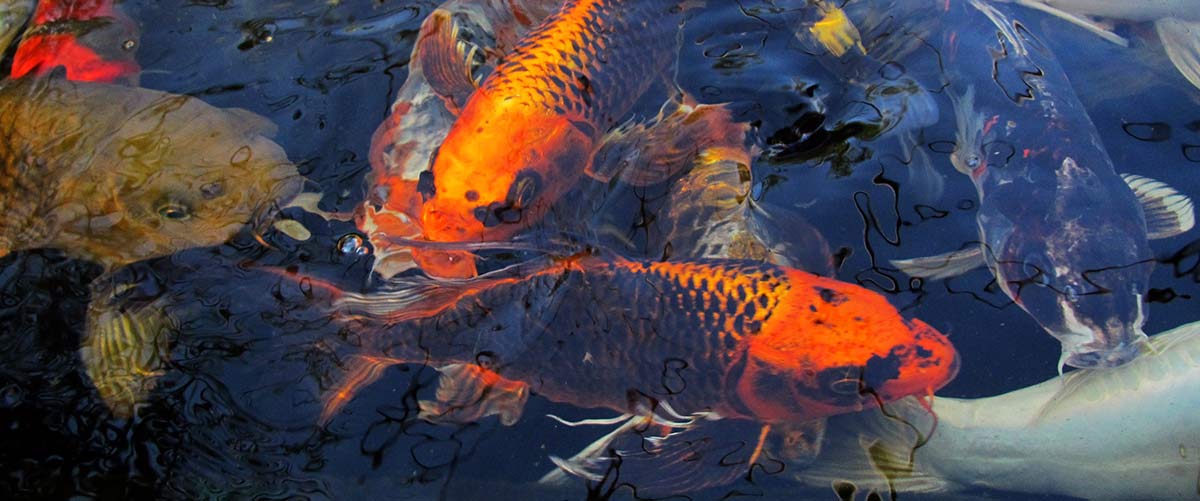Spring is a critical season for your pond, especially with regards to pond temperatures and koi or goldfish. After a long winter of cold water temperatures, not eating and sometime less than ideal water quality, koi and goldfish are susceptible to parasites and bacteria. During the winter months when water temperatures are below 40 F (4.5 C), koi and goldfishes’ metabolisms slow right down, their immune systems are basically dormant, so they are susceptible to parasites and bacteria. Luckily, pretty much everything else in the pond is dormant as well during the winter, including the disease causing bacteria such as Aeromonas / Pseudomonas as well as common parasites.

In spring, once the ice melts from the pond and the water begins to warm up, a critical and potentially dangerous time begins for fish. This spring ‘danger zone’ is often referred to as ‘Aeromonas Alley’ which is when the pond temperatures are between 50 F (10 C)and 65 F (18 C). As the pond warms and the water temperature reaches 50 F (10 C) bad bacteria in the Aeromonas family can grow and multiply quickly in the pond, much faster than the fishes’ immune system can react. In fact fishes’ immune systems are only working at 50% efficiency when the water temperature is 65 F (18 C). To make things worse, many common parasites such as Costia, Chilodinella, Trichodina and Flukes also begin to rapidly grow at the same time.
If you cleaned your pond properly last fall, this greatly increases the chances that your fish will be fine. Many parasites and bacteria thrive in ponds with lots of sludge and organic matter at the left in the bottom.
During the spring, water quality can also be a problem. The good bacteria that live your pond and filter (Nitrosomonas and Nitrobacter) that break down harmful ammonia and nitrites multiply very slowly compared to other bacteria, especially in cool water. It is always a good idea to feed your fish sparingly in the spring when temperatures are cool and monitor water quality (ammonia, nitrite and pH) with a water quality Test Kit.
If you notice any signs of stress or unusual behaviour with your fish, try to take a close look at them. If any of your fish have a parasite or bacterial infection, treat immediately. If you aren’t sure what symptoms to look for, see our Koi Disease Diagnosis & Treatment page for more information. If you catch an infection early, there is a much greater chance of successfully treating it. Some signs of bacterial infection are – ulcers (red sores), red streaks in in fins and on body, fin rot or mouth rot. Signs of parasite infections are – white spots on fins and body, a greyish film patches on body, excess mucous/slime coat on fish, fins clamped close to body. If you see any signs of bacteria or parasites, treat with Sabbactisun or Parazoryne. These treatments are safe to use in water temperatures are above 50 F.
Usually, once your pond warms up above 65 F, the chances of your fish becoming sick is much reduced. As long as proper pond maintenance is performed and water quality is maintained, you should enjoy a trouble free pod season.
Cold temperatures and ‘Aeromonas Alley’ are inevitable in most ponds. However, that doesn’t mean that it will always be a problem in your pond.
To reduce the chance of your fish getting sick in the spring, make sure to do a little extra pond cleaning in the fall. Cut back plants, net your pond to prevent leaves from falling in, remove and sludge and muck matter from the bottom of the pond to reduce the amount of organic matter that can foul the water. We also recommend using a Cold Water Bacteria in the fall to help ensure the water quality remains good all winter.